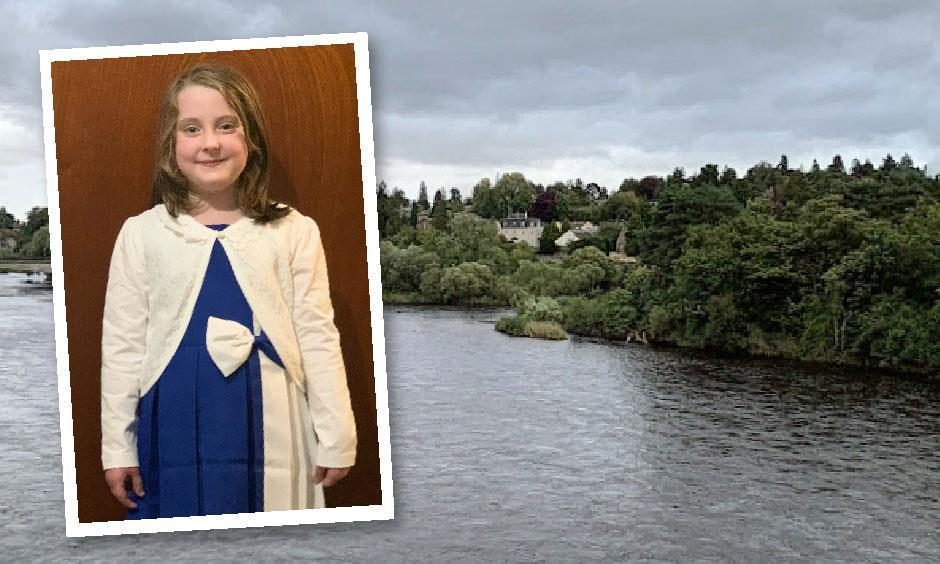Emergency services in Scotland have issued a joint warning highlighting the deadly dangers of swimming in rivers, after a tragic seven days which saw six people drown.
With Scotland enjoying a heatwave, scenes of young people cooling off in rivers across have been widespread.
However, lifeboat charity RNLI is highlighting the potentially life-threatening consequences of ‘taking a quick dip’.
In all, six people were killed in water-related incidents in Scotland in the last seven days.
An 11-year-old boy died in a river near Stonehouse, South Lanarkshire, and a 13-year-old drowned in the Clyde near Lanark on Sunday.
Two members of one family drowned
Two members of one family and a close friend drowned after their children went swimming off Pulpit Rock near Ardlui, near Loch Lomond, last Saturday evening, and a teenager, Connor Markward, 16, died in a separate incident last Friday.
The RNLI’s water safety lead for Scotland, Michael Avril, said: “Rivers pose a particular risk to our young people and I hope parents will share this with their children.
“Any death by drowning is tragic and we’ve already seen too many this summer, our thoughts are very much with the loved ones of those who have lost their lives.
“Rivers can look inviting, like a great place to cool off, especially when you see your mates enjoying it or the sun is shining down however, the risks are all too real.”
‘Even the strongest swimmers can struggle’
He added: “Swimming in open water is very different to swimming in a pool.
“Unseen currents, cold water and waves, yes even in rivers or lochs, can make swimming or even just staying afloat so much harder.
“Even the strongest swimmers can quickly get out of their depth and start to struggle.
“There’s also the risk of becoming snagged on a hidden object such as a rock, tree root or even a discarded shopping trolley or bike.”
Two River Tay rescues
In Tayside, two children had lucky escapes after strangers came to their rescue when they got into difficulty while freshwater swimming in the River Tay.
Perth man Adam Davison was hailed a hero after saving a young boy who was almost dragged underwater in the River Tay in the Fair City.
The rescue happened on Thursday July 22, near Moncrieffe Island, when a 12-year-old and his friend were swimming in the river.
Personal trainer Adam was passing by with a friend and his friend’s son when he heard the boy in distress at around 6.50pm, and had to dive in and swim to the lad’s aid.
At one point, Adam, 30, said he thought “it was 50/50” whether they would both survive the ordeal, as the powerful currents pulled them down under the water.
He received a round of applause from bystanders and has been offered a free meal from local chef Dean Banks as thank you.
Perth barber Will Robertson, 44, who witnessed the rescue, has also offered Adam a free haircut to show his appreciation.
‘Amazing’ girl made rescue despite not being able to swim
Earlier this month, an eight-year-old girl saved the life of a 12-year-old boy from drowning in the Tay, also near Moncrieffe Island.
After his cries for help went unheard by adults, the youngster entered the water herself – even though she cannot swim – and managed to keep Cayden’s head above the water while they waited to be pulled to shore on July 15.
Alasdair Perry is the Scottish Fire and Rescue Service (SFRS) deputy assistant chief officer and head of prevention and protection.
He said: “I would like to offer my sincere condolences and those of everyone at the Scottish Fire and Rescue Service to those affected by this weekend’s tragic events.
“They are a very sad reminder that Scotland’s waterways can be dangerous, and we are asking everyone to take care and heed all available advice from us and our partners.
Do not swim alone or drink alcohol
“We would ask that no one swims alone and that, where you can, have the proper buoyancy and safety equipment.
“Never leave children or young people unattended and do not mix alcohol with swimming.
“We will be conducting more visits alongside our partners such as the RNLI to popular areas to engage with swimmers and visitors directly.”
For those used to meeting up with friends on the banks of their local river or who have enjoyed taking a dip, the advice from the emergency services may seem to be overly cautious.
‘We all think we are immortal as teenagers’
But as the RNLI’s Michael Avril added: “Nobody ever thinks it will happen to them, that’s the reality.
“We just want people, especially younger people, to stop and think of the dangers.
“We all think we are immortal when we’re teenagers, we all like to take risks but we’re really asking people to be aware of the heartbreaking consequences of these risks.
“Be willing to be the person in your friendship group that asks ‘is this a good idea’, it could save a life.”
What is the RNLI’s advice for staying cool this summer whilst also staying out of danger?
Stick to lifeguarded beaches
The safest way to experience water is at a lifeguarded beach or pool.
The RNLI has eight lifeguarded beaches in Scotland and their lifeguards are always on hand to offer safety advice as well as to respond in an emergency.
If you are unable to reach a lifeguarded beach, make sure you are aware of how to keep yourself safe:
- Research the local tide times, understand the risk of being cut off at any point by the tide
- Never use inflatables at the coast or in a body of water that is not a swimming pool, you can quickly be swept out to sea or out of your depth
- Don’t take risks
- If out paddleboarding or kayaking, take a means of calling for help such as a phone in a waterproof pouch and wear a lifejacket/buoyancy aid.
- Always tell someone where you are going and when to expect you back.
- If you do see someone in trouble in the water call 999 and ask for the Coastguard, they will get help to you.
If you are tempted to try a new water sport, make sure you find a qualified organisation to help you, one which can supply you with both safety equipment and a trained instructor.

